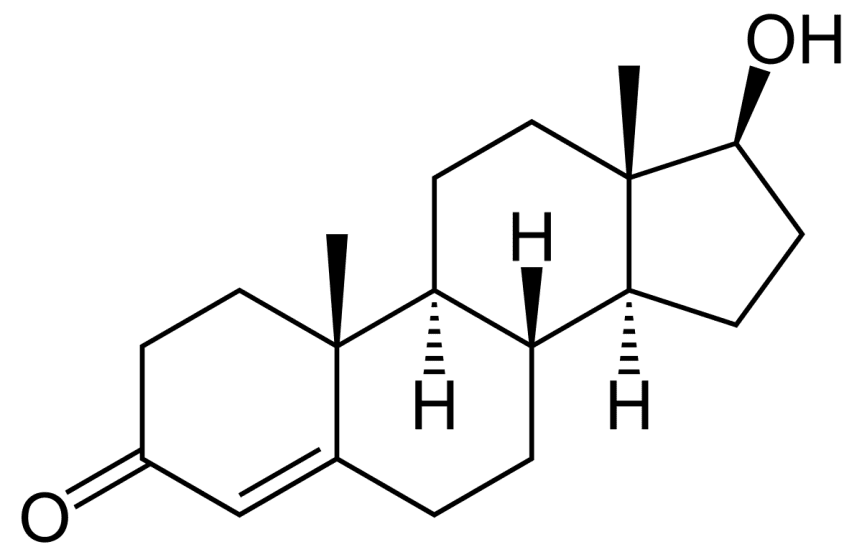“The Basic Logistics of Testosterone, and its Origins”
Providing a better comprehension of how testosterone works can help us understand why our own levels may be low and what we can do to elevate Testosterone in our bodies and become healthier,.
The Three Sub-Types of Testosterone
Testosterone is a 19-carbon steroid hormone made from cholesterol that, provides a whole host of benefits. On average, the male physiology produces about 7 mg of testosterone a day, but not all of that T floating in our bloodstream can be utilized. Our total testosterone can be broken down into the following three sub-types:
1. Free Testosterone. This is testosterone in its purest form. The reason it’s called “free” is because there aren’t any proteins attached to it. Unbound to other molecules, free T can enter cells and activate receptors in order to work its virile magic on both body and mind. Despite free testosterone’s benefits, it makes up only 2 – 3% of our total testosterone levels. To maximize the benefits of T, we want to do what we can to increase the amount of Free testosterone in our bloodstream.
2. SHBG-bound Testosterone. About 40 -50% of our total testosterone is bound to a protein called sex hormone-binding-globulin (SHBG). SHBG is produced in our livers and plays an important role in regulating the amount of free testosterone in our bodies. The downside to SHBG-bound T is that it’s biologically inactive, meaning our bodies can’t use this type of testosterone to help build muscles or boost our mood. Excess SHBG is why it’s possible to have high total testosterone levels, but still suffer symptoms of testosterone deficiency — when SHBG binds itself to too much testosterone and doesn’t leave enough free testosterone circulation. Research suggests that diet and lifestyle changes can help reduce the amount of SHBG in our system, making more free T available.
3. Albumin-bound Testosterone. The remaining amount, almost half of testosterone is bound to a protein called albumin. Albumin is a protein also produced in the liver, and its job is to stabilize extra-cellular fluid volumes. Like SHBG-bound testosterone, albumin-bound testosterone is also biologically inactive. However, unlike with SHBG, the bind between albumin and testosterone is weak and can be easily separated in order to create free testosterone when needed. Because albumin-bound testosterone is easily converted to free T, some labs lump it together with free testosterone whenever you get tested.
Where & How Testosterone Is Made
*A small percentage of testosterone is produced in the adrenal glands on top of our kidneys. But most — 95% of it — is made in our testicles.
The process by which our testicles produce Testosterone is as follows:
A). The process starts in our brain. When our hypothalamus detects that our body needs more testosterone, it secretes a hormone called Gonadotropin-releasing hormone. The “GR” hormone makes its way over to the pituitary gland in the back of our brain.
B). When our pituitary gland detects the presence of gonadotropin-releasing hormone, it starts producing two hormones: 1) follicle-stimulating hormone (FSH) and luteinzing hormone (LH). The FSH and LH then Travel down to our testicles via the free Highway known as our bloodstream.
C). When the FSH and LH reach our testicles, they tell them to do two different things. FSH kicks off sperm production, while LH stimulates the “Leydig Cells” in our testicles to create more testosterone.
D). Through a complex process, our testicles’ Leydig cells, then convert cholesterol into testosterone. That’s right, cholesterol is the building block of testosterone. Leydig cells get most of what they need to produce T by simply absorbing the cholesterol floating around in our blood from, example, the bacon and eggs we ate in the morning. If there’s not enough cholesterol in our blood, our testicles can produce a bit of it so that the Leydig cells can convert it to testosterone. But relying too much on cholesterol produced by our testes can actually inhibit our Leydig cells from producing T. You gotta eat those eggs!
5. Once T is produced, it’s sent back into our bloodstream. Most of it immediately attaches to SHBG and albumin, becoming biologically inert. The small percentage that remains free and unbound circulates around and starts manning up our minds and bodies. When our hypothalamus detects that we have enough T in our blood, it signals the pituitary gland to quit secreting LH so our testicles ramp down T production.
And that, my friends, is (roughly) how testosterone is made. Here’s a flowchart of the process for you visual learners out there:
